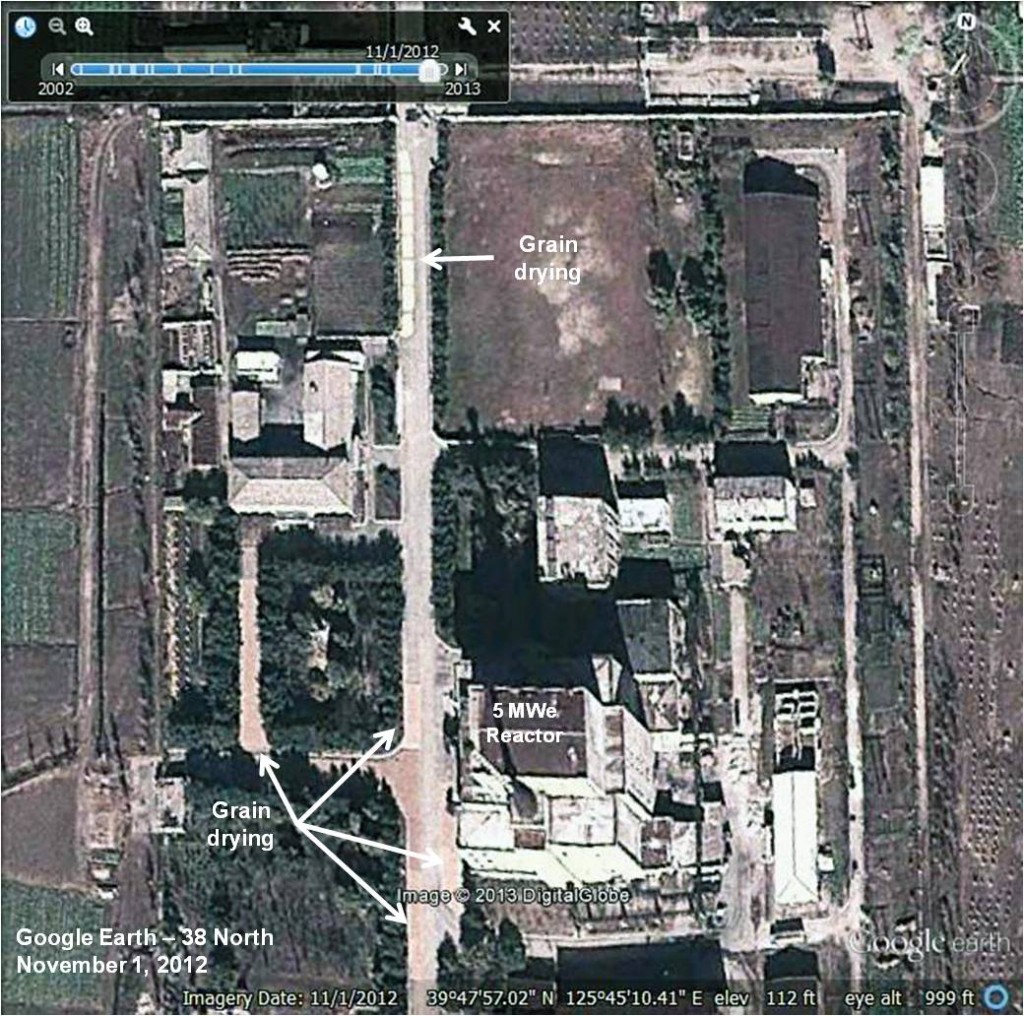Grain Drying: A Glimpse of Daily Life at Yongbyon
The Yongbyon Nuclear Scientific Research Center has been North Korea’s main nuclear facility since the early 1960s when one of the first American spy satellites spotted construction of a small nuclear research reactor provided to North Korea by the Soviet Union. The “furniture factory” (as it was called by the original Koreans involved in the project) dramatically expanded during the 1980s. By the early 1990s, US intelligence estimated that Yongbyon could produce large amounts of plutonium, a danger that was averted by the 1994 US-North Korea Agreed Framework. The facility fell on hard times. But with the collapse of that arrangement in 2002, Yongbyon has made a comeback with the construction of both the new uranium enrichment facility unveiled in 2010 and an Experimental Light Water Reactor (ELWR) as well as the restart of its old 5 MWe reactor.
The secret installation is located just off a narrow, bumpy and hazardous dirt road, two hours by car or 90 miles north of Pyongyang and 10 miles north of the ancient resort city of Yongbyon. For centuries, travelers stopped there on their way to view the fabled Yak Mountain (Yak-san), which is renowned for its lush springtime sea of flowering azaleas. During their first trip to the nuclear site in November 1994, the American delegation visited a nearby ancient temple where some 80,000 pages of Buddhist writings had been preserved since 500 A.D. Their young guide pointed out damaged stone artifacts in the mountain pine grove, while standing next to a sign indicating that the area had been bombed by “American imperialist swine” during the war.
The Yongbyon nuclear facility is essentially a small isolated town patterned after Russia’s nuclear cities. The facility is roughly 50 square miles; it is heavily guarded and surrounded by anti-aircraft batteries. Within the complex, hundreds if not a few thousand scientists, engineers and nuclear workers along with their families live on site and work in office buildings, nuclear laboratories and other industrial facilities. Other personnel provide support services including growing food.
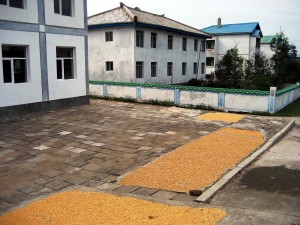
Commercial satellite imagery from April and May 2013 shows grain drying on paved surfaces at Yongbyon (figures 1 and 2). This is a common practice in Asia and North Korea. When a crop is harvested it will always have some residual moisture. Depending on weather and the crop characteristics, the harvest can sometimes be delayed until the grain is fairly dry while still on the plant. Moist grain in storage will spoil (ferment, mold or rot). So if the harvest is not dry enough, the extra moisture needs to be removed before it can be stored. In the United States, grain is typically run through a dryer (heated air blown over the grain moving on some kind of conveyor) or initially stored in a ventilated silo that has fans to force ambient air up through the grain which rests on a perforated floor. Since the DPRK lacks these means, grain is air/sun dried on pavement or on flat, pounded dirt, drying areas.
Figure 1. Grain seen drying on paved surfaces near the 5 MWe reactor.

Figure 2. More patches of grain drying spotted near the 5 MWe rector.
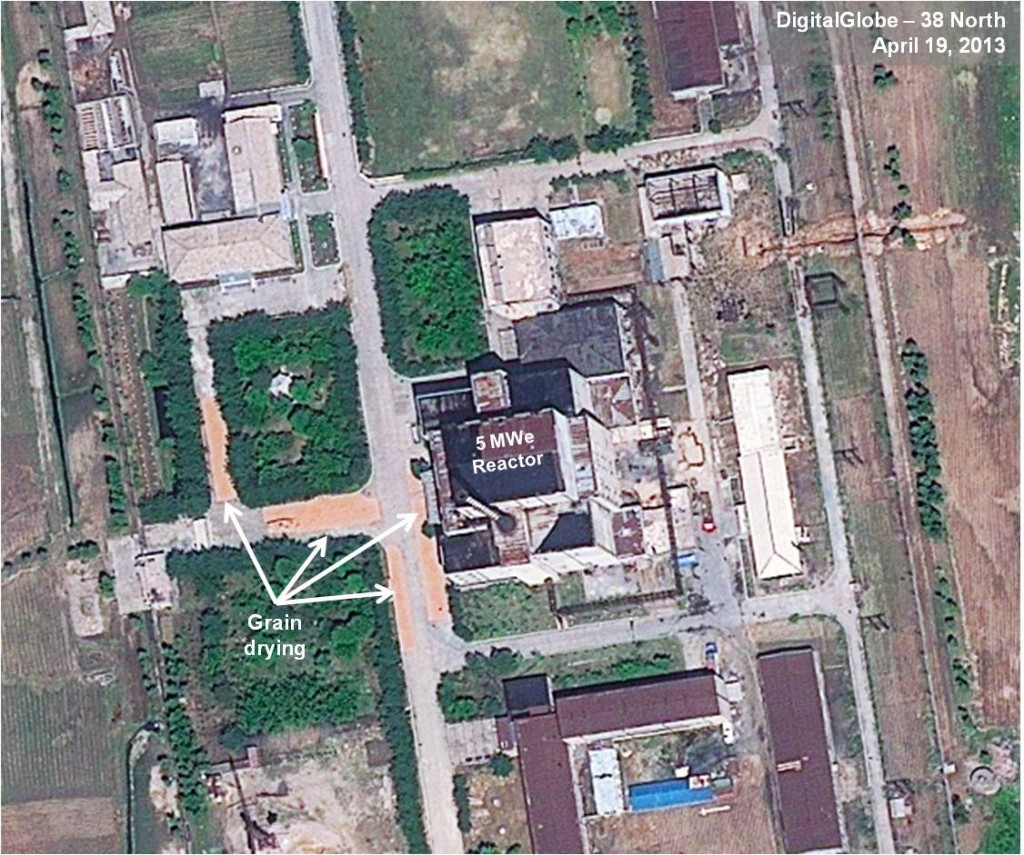
Because Yongbyon is a community, albeit, a “nuclear city,” it is not at all surprising that the North Koreans are handling the grain, most of which was probably grown nearby as there is a strong effort for every work unit to be self-sufficient. Grain drying has been spotted in the past not only at the Yongbyon nuclear facility but also at the Tonghae Satellite Launching Ground as well as other factories and installations with large, paved surfaces. Satellite imagery from April 19, 2013 showed two rectangular orange colored areas on the concrete road to the 5 MWe reactor. By May 3, there was not a trace of orange in either location but by the middle of the month, grain was again seen drying at four locations on roads near the reactor building’s entrance.
However, the timing of these photos is puzzling. The color is consistent with maize, and it looks like the grain is evenly spread on some kind of light colored tarp (there appears to be a lighter border around the orange). But the maize harvest normally begins in August and continues into the fall. Why are the North Koreans drying grain in April and May?
One hypothesis is that the typhoons of August and September 2012 set back North Korean efforts to dry the grain immediately after the harvest by shortening the drying season, which normally starts in September. Satellite imagery from fall 2012 shows that grain drying at Yongbyon commenced after two storms hit the North on August 29 and 31 at the start of the harvest and drying season. The North Koreans were able to start drying by September 5 but had to stop when the next storm hit on September 17. (Imagery from September 22 and October 11 show no drying. It had resumed by November but may have been cut short again by cold, rainy days.) In short, the mid-September typhoon may have set back the effort and the North might have had to store the grain over the long cold winter. Good weather in late April and May could have been their first chance to dry it.
Figure 3. Grain seen drying just days after storms in the Yongbyon area in fall 2012.
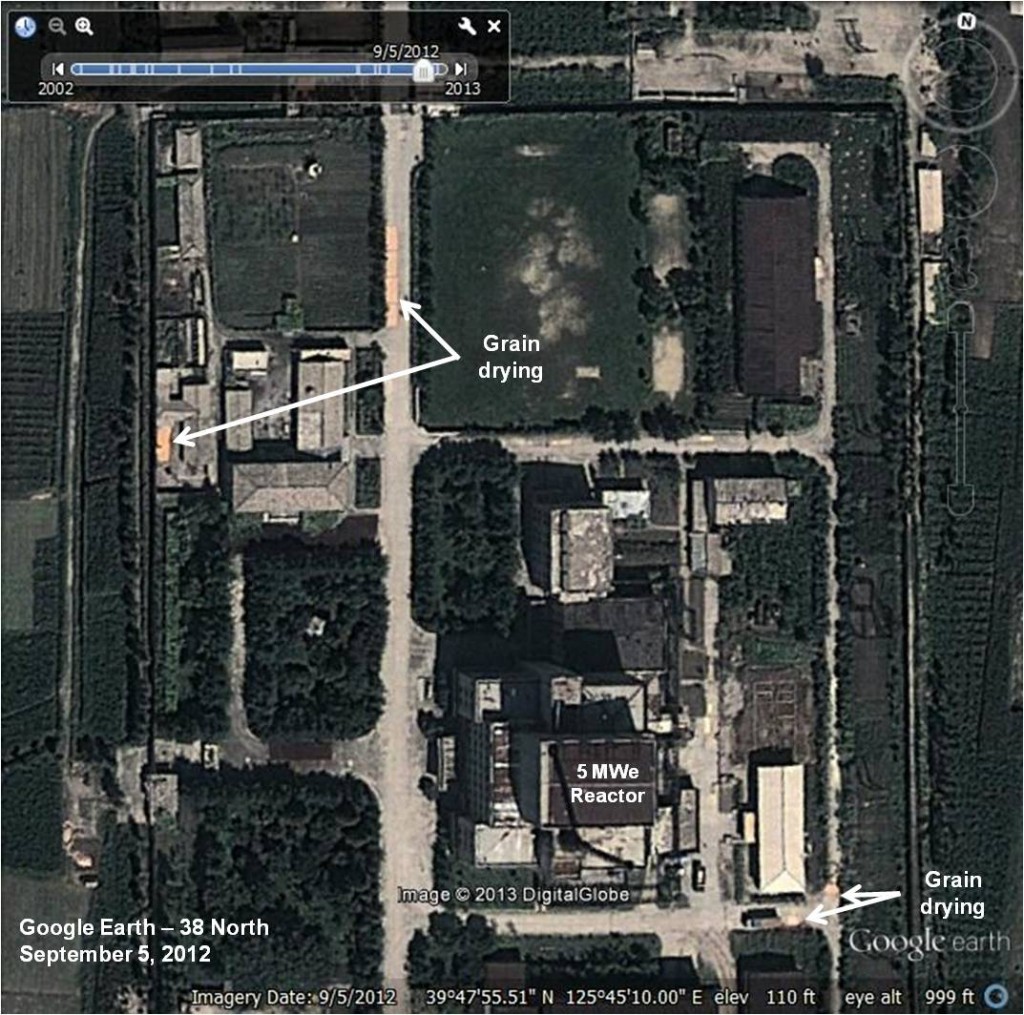
Figure 4. Drying seemed to stall in late September and throughout October.
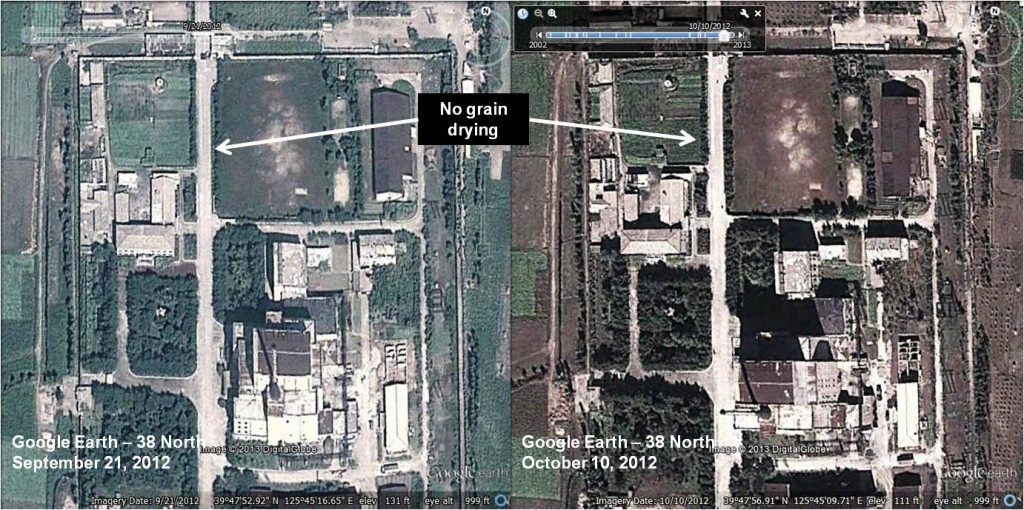
Figure 5. Drying resumed by November.
